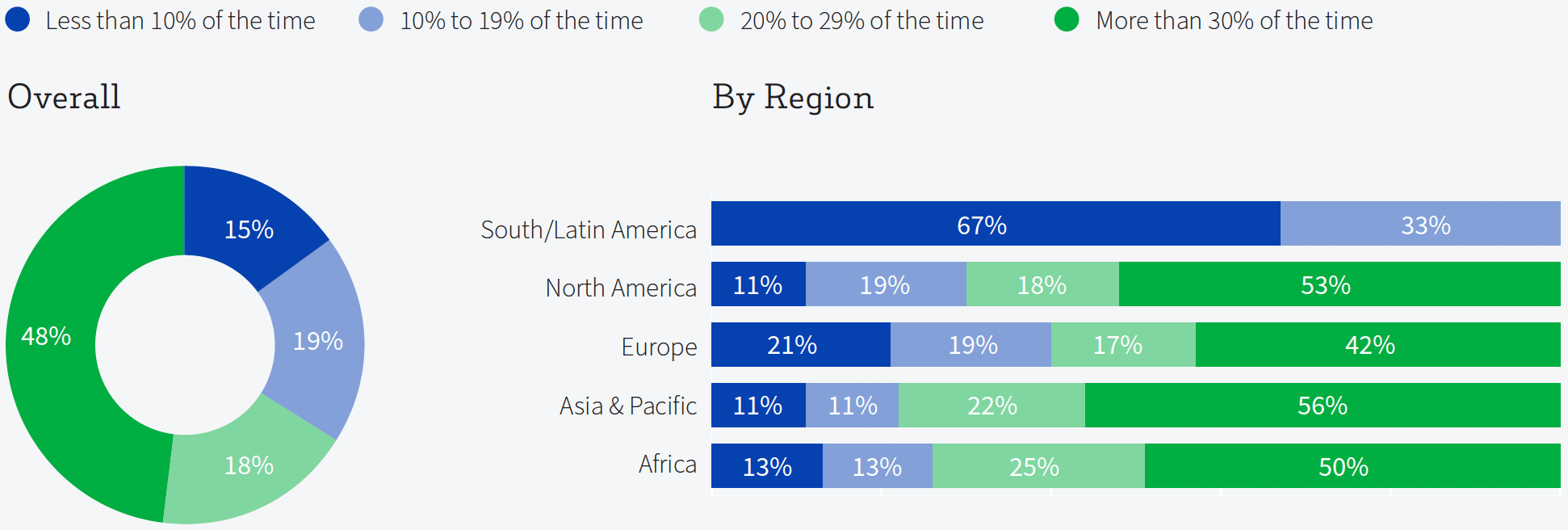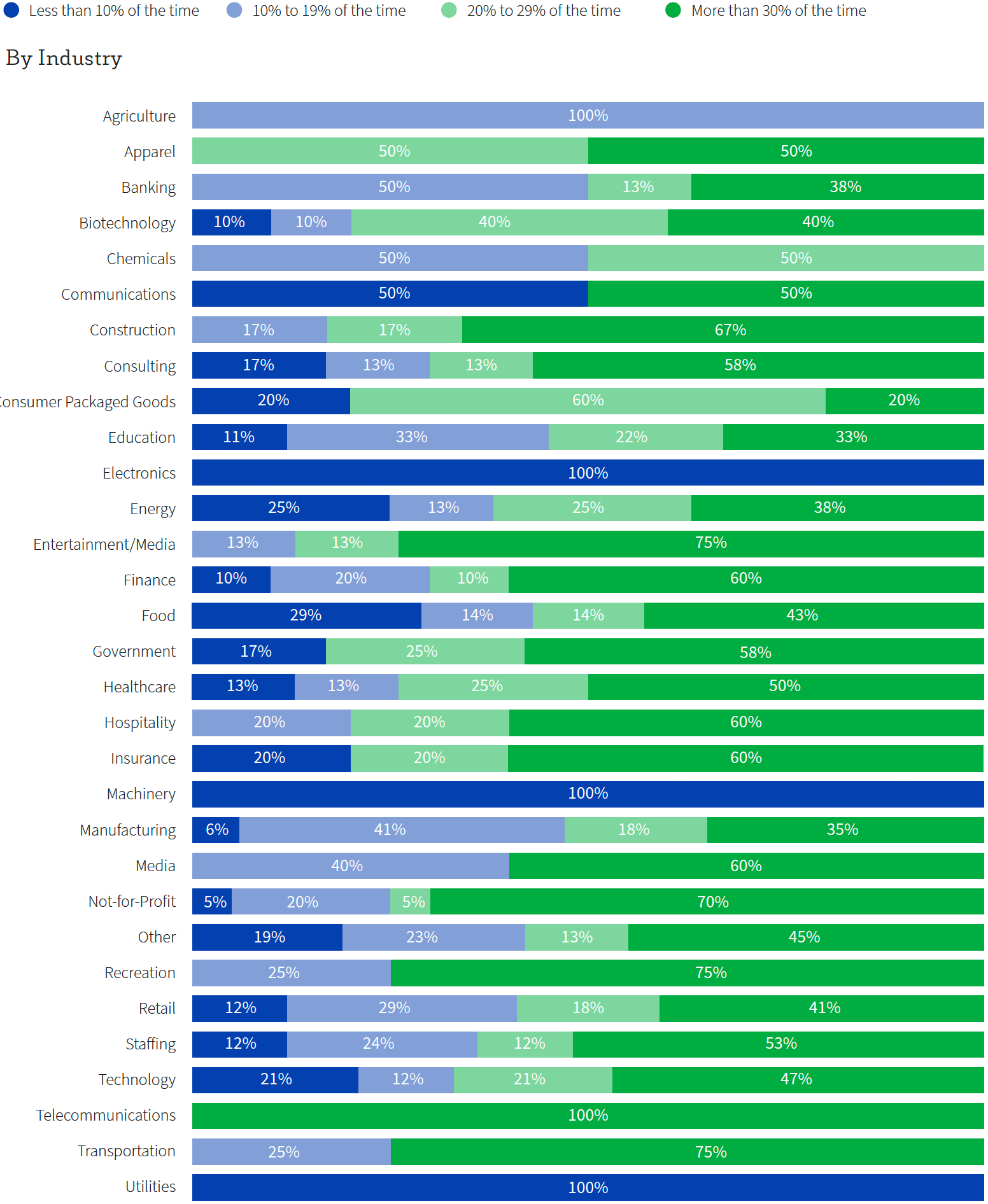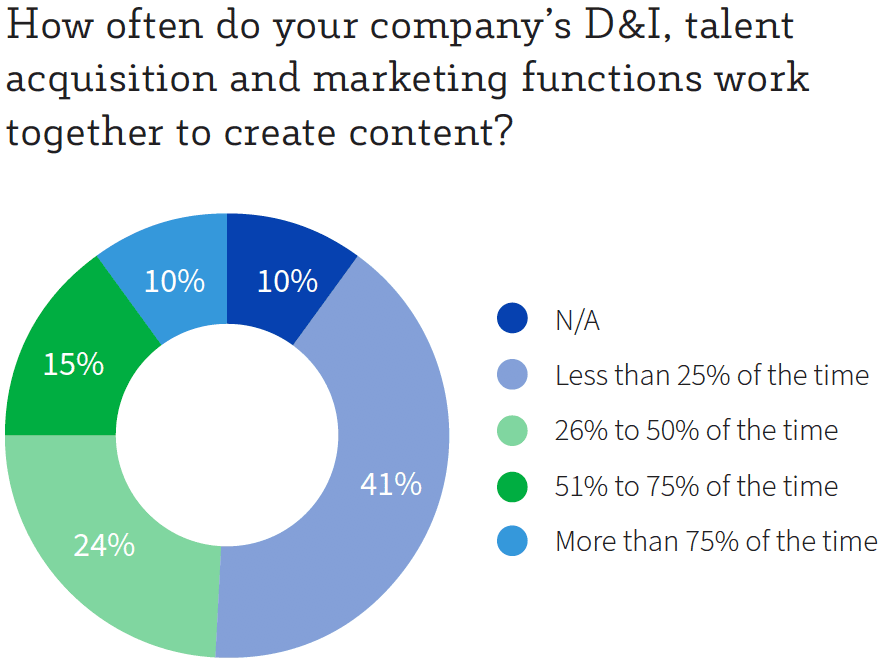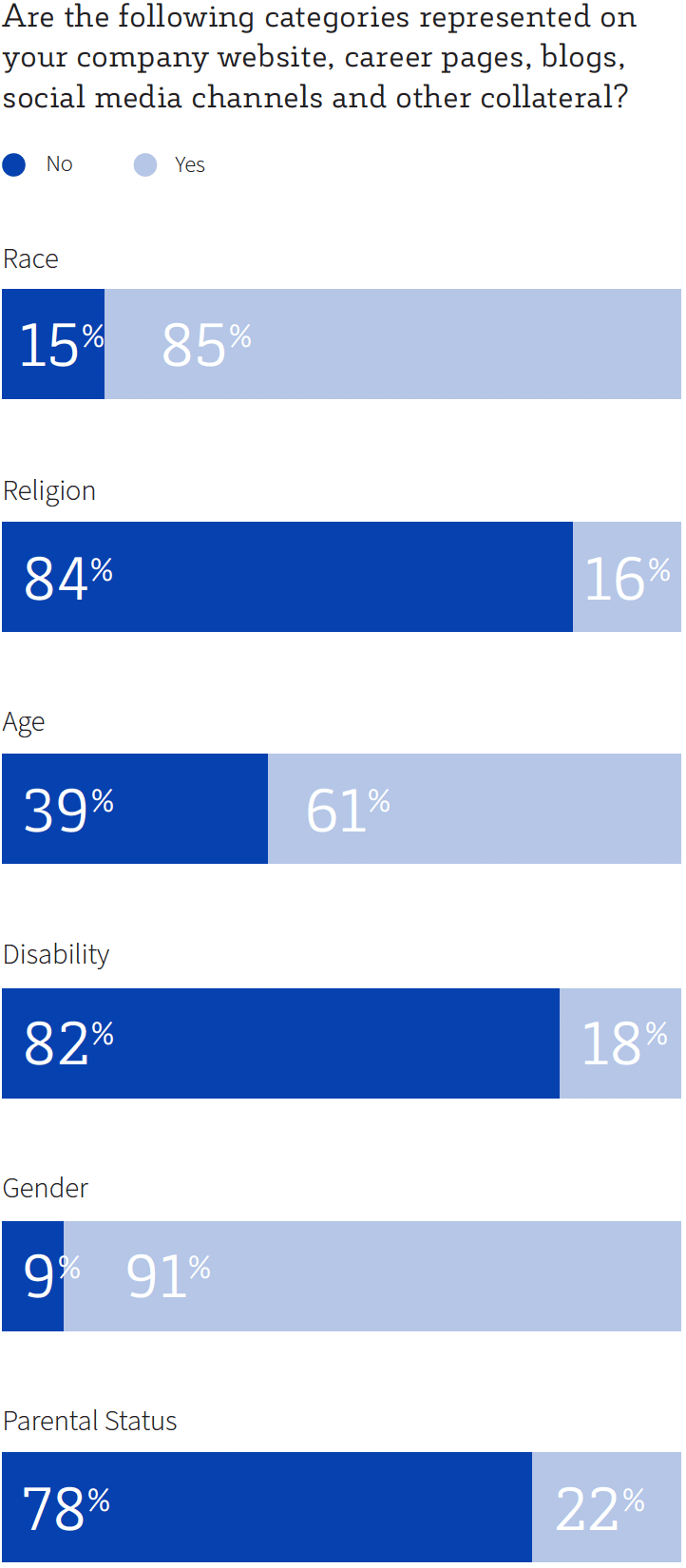Barely Scratching the Surface
The first step to attracting diverse talent is to foster Diversity Brand Equity, or the ability to allow underrepresented candidates to see themselves working for you through various brand interactions. By investing in your Diversity Brand Equity, you do more than protect your overall brand reputation. You also give your organization a powerful competitive recruitment advantage, one that improves your organization’s ability to prioritize attraction, accessibility, and positive interactions, creating a better candidate experience for the talent you need.
This encompasses the language and imagery you use in your job advertisements, your interview processes, and the many moments that make up the candidate experience. The more inclusive these touch points are, the easier it is for historically excluded candidates to see themselves thriving at your organization.
And yet, many organizations are missing out on the most basic opportunities to share their commitment to building a diverse and inclusive workforce with potential applicants through these public-facing channels. For example, 15% of people who completed the assessment reported that they featured underrepresented groups on their company website, career channels and other recruiting collateral less than 10% of the time.
In some industries, the gap is even more acute
— Energy, Food, Technology and Finance participants were far more likely than their peers in other industries to report featuring underrepresented groups less than 10% of the time. Perhaps most surprisingly, so were
Consumer Packaged Goods respondents — an industry that absolutely depends on diverse perspectives to serve its customers well.
What percentage of the time does your company website, career pages, blogs, social media channels and other collateral contain images of underrepresented groups?




Building Diversity Brand Equity isn’t a task that can be left to the D&I team alone. Attracting diverse talent requires a deliberate, highly strategic partnership between your D&I, talent acquisition, and marketing teams.
Yet, we found that only about one-quarter reported that their organizations have these functions working closely together more than half of the time.


Our understanding of diversity has grown more inclusive. In many cases, however, external recruiting collateral hasn’t kept pace. Participants reported higher rates of representing gender, race and ethnicity, and age in their employer branding collateral. However, they reported underrepresenting sexual orientation, parental status, disability, and religion.
Each of those gaps represents a chance to make meaningful progress.

Extending a Warm Welcome to All
Cielo has a shared commitment to providing opportunity for all, regardless of what they look like, where they come from, how they worship, or who they love. They are committed to being an organization that encourages employees to be their authentic selves.

This vision is brought to life at Cielo through strengthening the role all of Cielo’s leaders play in shaping a culture of diversity, equity, inclusion, and belonging (DEI&B), supporting teams in going beyond awareness and empowering them to take action, expanding global employee resource groups (ERG), and improving the overall hiring experience and process.
One of the most successful programs at Cielo has been its global “Inclusion Infusion” sessions. “These are peer-led conversations that happen within all of our regions,” explains Molly Thiel, Cielo’s Chief HR Officer, “pulling together employees at every level to discuss impactful topics such as microaggressions and neurodiversity.”
Cielo is now focusing on ERGs and other resources to support the areas of disability and neurodiversity, race, ethnicity, culture, heritage, and religion after experiencing success with one of their first anchor ERG groups for the LGBTQIA+ community, as well as first responders.
“As a global organization, we realize there are both global and local systems that use factors like race and ethnicity to both discriminate or disenfranchise. We are working to create a framework that supports the unique challenges that each of our regions experiences while also accounting for global commonalities that we can address more broadly,” Thiel says.
Cielo is taking what they’ve learned with their own strategy-building and journey to help their clients improve their DEI efforts. Cielo’s consultants help audit their clients’ DEI candidate journeys from attraction to onboarding.

“We help TA leaders map where they are and where they want to be on their DEI journey to uncover their biggest opportunities,” says Jacquese Brown, Cielo’s Senior Diversity, Equity, and Inclusion Program Leader. Often, recommendations include strategies to magnify diversity messaging as part of an organization’s employment brand, build segmented recruitment marketing campaigns, and identify key partnerships for diverse talent pipelines.
To support their clients in developing and executing a fair, equitable hiring process, Cielo requires all
their recruitment teams to complete a diversity certification to mitigate the effects of unconscious bias
on hiring funnels.
Action Items
Make sure your commitment to diversity is supported publicly by multiple organization leaders, starting with your CEO.
Develop a partnership between TA, marketing, and D&I to create content that highlights values, culture, and diversity.
Promote benefits that might appeal to individuals who represent various dimensions of diversity (partner benefits, EAP, maternity leave).